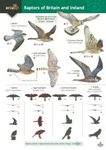Field / Identification Guide
Out of Print
By: Martin Garner(Author), Ray Scally(Illustrator)
132 pages, colour photos, colour & b/w illustrations, colour distribution maps
![Challenge Series: Autumn Challenge Series: Autumn]()
Click to have a closer look
About this book
Related titles
About this book
This is the first in the series focusing on the season of autumn. Most birders go out into the field knowing roughly what might be encountered in a given season and not needing all the information on all species pertaining to the whole year. So the Challenge Series begins with a number of autumn 'challenges'. Over 40 taxa are covered in 18 chapters ranging from Hen and Northern Harriers, Wilson's and Common Snipe, Pallid and Common Swift, and Siberian and Common Chiffchaff, to potential vagrants like Sharp-shinned Hawk and Yellow-streaked Warbler. There are the new splits such as Cabot's and Sandwich Tern, three Subalpine Warblers, three Lesser Whitethroats and three Stonechat taxa. Each ID challenge is presented in a concise and accessible form with accompanying photos, illustrations, and sonograms where appropriate.
An introductory section explain the genesis and concept of this series of books. The idea is to produce a series of books at the cutting edge of identification discoveries. Some of the material is new and relatively untested. A challenge is laid down to readers. Go out and test these ideas. Watch birds closely and more carefully and make your own discoveries.
The author is acutely aware that people have different learning styles. Not everyone reads books with the same ease and enthusiasm. Besides presenting pithy, easily followed displays of relevant information the author wanted the option to offer video tutorials, sound files, more photos and updates. QR codes answered that desire. With the proliferation of tablets and smart phones, much more material pertinent to each chapter plus fresh discoveries will be available on dedicated web space via the QR codes at the start of each chapter.
Customer Reviews
Field / Identification Guide
Out of Print
By: Martin Garner(Author), Ray Scally(Illustrator)
132 pages, colour photos, colour & b/w illustrations, colour distribution maps




























